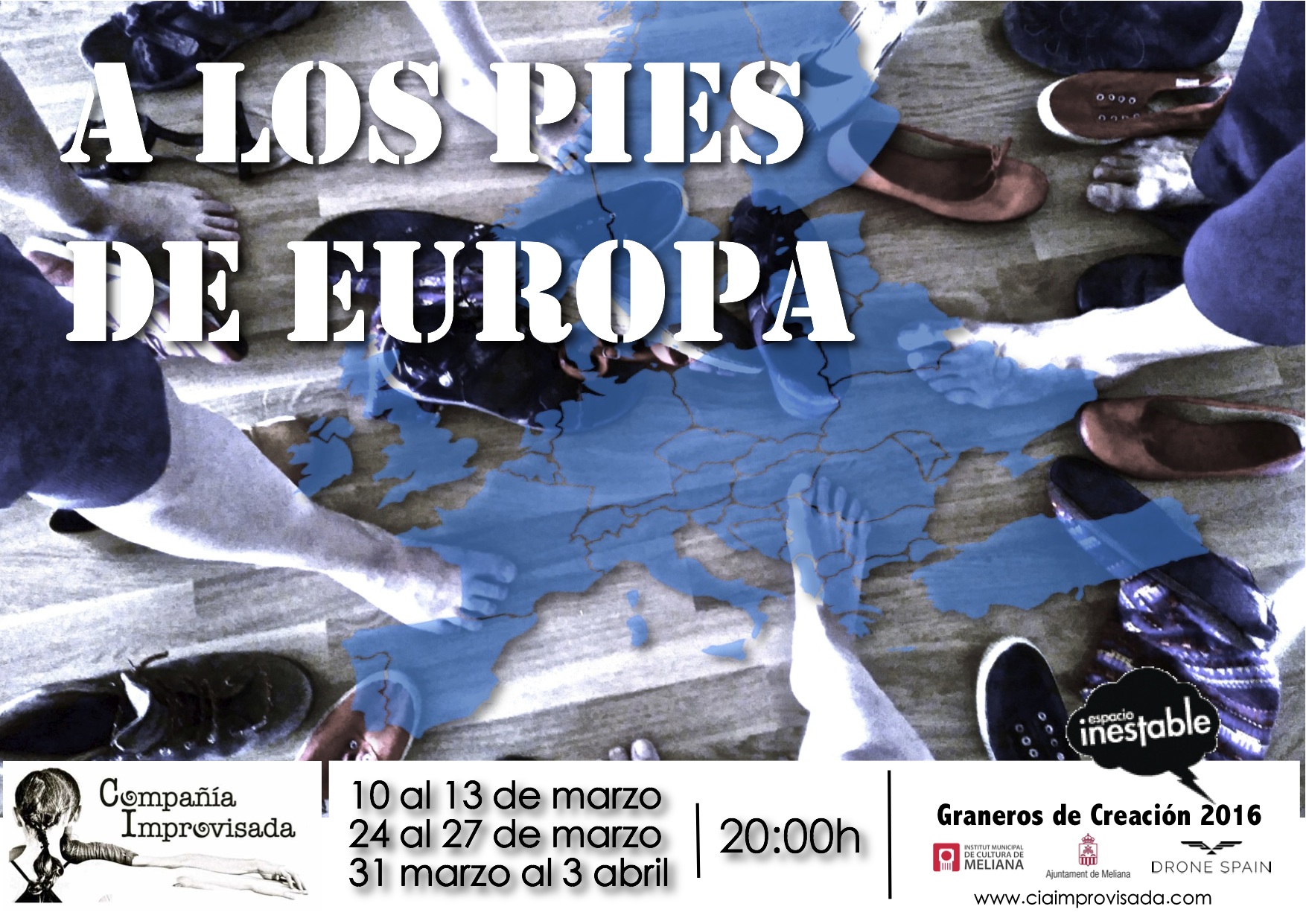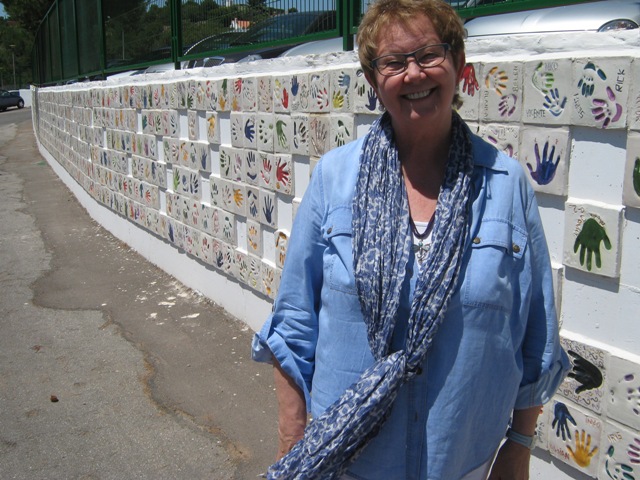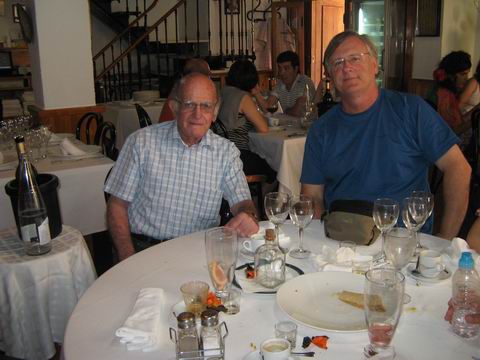Playing Ska Harmonica (Skarmonica) with The Toasters in Valencia
Adapting the Blues Harmonica to play Ska music – by a rock musician living in Valencia.
About 10 years ago I met a famous ska musician. It wasn´t my first time meeting a famous person since I have played in some pretty big rock festivals and sometimes you get a chance to chat with the odd superstar, but the funny thing this time was that it wasn´t after a concert or in the backstage of some stadium, but at a BBQ party.
 I live in Valencia, Spain, and when you live in a culture where you are the minority, usually the minority likes to get together and mingle. As an example of what I mean: I used to live in Japan and a friend of mine once had dinner with Van Halen because he happened to be in the same restaurant in Nagoya and VH had been in the country for 2 weeks and were starved for conversation with someone in English. In my case, since the musician in question and I were both resident foreigners, we ended up at the same social event because the expat community in Valencia is a small world and it was bound to happen sooner or later.
I live in Valencia, Spain, and when you live in a culture where you are the minority, usually the minority likes to get together and mingle. As an example of what I mean: I used to live in Japan and a friend of mine once had dinner with Van Halen because he happened to be in the same restaurant in Nagoya and VH had been in the country for 2 weeks and were starved for conversation with someone in English. In my case, since the musician in question and I were both resident foreigners, we ended up at the same social event because the expat community in Valencia is a small world and it was bound to happen sooner or later.
Since I´m mostly a “rock guy”, I wasn´t star-struck at all when this tough-looking, shaved-headed, tattooed older dude with tree-trunk arms introduced himself from behind really dark shades as “Bucket” from a band called The Toasters. Apparently they were some sort of old-school ska band from way back in 1981 in New York, one of the originals for the genre, and in the world of ska they really meant business.
But not knowing the world of ska and never having heard of The Toasters in my life beyond the flying ones from early versions of Microsoft Windows, I proceeded (still unimpressed fame-wise) to have a regular ´ol conversation about how good the chicken spices were, the amazing quality of the inexpensive local Spanish wine and what a nice Villa the party was being held in. I guess I babbled on about my band a bit since I knew he was supposed to be somebody in the music industry (and hey…you never know), but really we just enjoyed a few beers at a backyard BBQ.
I later learned that The Toasters do indeed mean business in the world of ska. Since 1981, they had played over 4500 concerts across just about every continent (by now approaching 5500 shows I´m sure). They manage all their own touring and booking and/or outsource work to trusted agencies as needed in different countries around the world. The real key, he told me, was to play as much as possible. What good is it being a musician if you aren’t out playing all the time? When you play a lot, you get really good and you come back to the same places again and again, each time drawing more and more people. It is the roadmap to building a career without a major label.

BUCKET – The Toasters
By the time I met Bucket, he´d had the whole thing down to a science for a while. I think in another time period he would have made a great logistics officer in the Roman army. He knew exactly what size of room to book in each city along the tour route (wherever in the world he happened to be touring) and he´d fill each one, large or small. He would even plan shipments of T-shirts and Vinyl merchandise to be waiting for the band in a specific city halfway through the tour so they could re-supply and continue on. As someone who has a hard time even booking a single show on his own, I found this to be simply awesome.
Anyway, Bucket and I got to talking about ska music and he told me that back in the day he used to play with a harmonica player. I was surprised but he said that in fact it was a more typical instrument in early ska than you would expect. I certainly had never heard of it, but then I had never heard of The Toasters either. Although I am now mostly a singer and guitar player, my first love was the harmonica and I´ve been playing blues and rock harp for years. So I started to think more seriously about ska harmonica – or I guess that would be the “skarmonica”.
Being a rock musician with no real previous knowledge of ska, I at first found it hard to believe was that this simple style of music with its backwards rhythm and quaint little melodies could be so infectious. I certainly didn´t “get it” at the time and was mystified at how it could be so successful. Then I went to my first Toasters concert and I changed my way of thinking pretty quickly. Ska was magnificent, I realized, and relied heavily on groove and a sort of reggae-punk rock attitude that made the whole room just want to dance and keep dancing. Of course the Toasters songs were all classics (although I didn´t know it at the time or recognize a single one) and I couldn´t help letting the bass, the orchestrated horn section and the off-beat rhythm get me moving on the dance floor.
 So that got me thinking about the harmonica. I am mostly a blues player and learned how to play blues harmonica by listening to recordings of old blues songs where harmonica is played mostly as a a kind of “wailing” instrument. Sure there´s lots of rhythm involved, but ska harmonica seemed like it would require something different. It came to me when listening to the keyboard player Bucket had with him on tour that year. A lot of what the keyboard player does in a ska band is support the off-beat guitar rhythm (on the 2nd and 4th of four bars, rather than the 1st and 3rd as with rock music). The keyboard often plays short bursts of chords in timing with the guitar and acts as a cushion for the rest of the music. That´s not to say there is no aggressive playing…on the contrary. This guy was one bad-ass keyboardist! But aside from his jaw dropping solo-moments, his was mostly a supportive role.
So that got me thinking about the harmonica. I am mostly a blues player and learned how to play blues harmonica by listening to recordings of old blues songs where harmonica is played mostly as a a kind of “wailing” instrument. Sure there´s lots of rhythm involved, but ska harmonica seemed like it would require something different. It came to me when listening to the keyboard player Bucket had with him on tour that year. A lot of what the keyboard player does in a ska band is support the off-beat guitar rhythm (on the 2nd and 4th of four bars, rather than the 1st and 3rd as with rock music). The keyboard often plays short bursts of chords in timing with the guitar and acts as a cushion for the rest of the music. That´s not to say there is no aggressive playing…on the contrary. This guy was one bad-ass keyboardist! But aside from his jaw dropping solo-moments, his was mostly a supportive role.
 So I just tried to think of the harmonica in the same way and attempted to imitate what the keyboard was doing and try to fill those shoes. I could play longer notes and full chords and time my breathing with the 2nd and 4th beats (together with the guitar) and fill the background with cool harmonica rhythm, almost like that Hammond organ. The other side of the coin was that since the harmonica is a wind instrument, I could also come forward at times on the orchestrated horn sections and add my harmonies in with the sax, trumpet and trombone players on certain parts of the songs. The combination was really nice and I´ve been trying to develop this style ever since.
So I just tried to think of the harmonica in the same way and attempted to imitate what the keyboard was doing and try to fill those shoes. I could play longer notes and full chords and time my breathing with the 2nd and 4th beats (together with the guitar) and fill the background with cool harmonica rhythm, almost like that Hammond organ. The other side of the coin was that since the harmonica is a wind instrument, I could also come forward at times on the orchestrated horn sections and add my harmonies in with the sax, trumpet and trombone players on certain parts of the songs. The combination was really nice and I´ve been trying to develop this style ever since.
 It wasn´t long before I was playing a few gigs with the Toasters. At first it was tricky because some of the horn sections had pretty specific melodies and I had to work out a bunch of them first on the harmonica. Of course I also had to figure out all the harmonica keys for each of the songs, but once I had those things sorted it was pretty easy and a lot of fun. Playing harmonica with a ska band means you get to dance around on stage a lot with the horn players (you just can´t help it) and the rest of the time is spent in that background-cushion keyboardist role.
It wasn´t long before I was playing a few gigs with the Toasters. At first it was tricky because some of the horn sections had pretty specific melodies and I had to work out a bunch of them first on the harmonica. Of course I also had to figure out all the harmonica keys for each of the songs, but once I had those things sorted it was pretty easy and a lot of fun. Playing harmonica with a ska band means you get to dance around on stage a lot with the horn players (you just can´t help it) and the rest of the time is spent in that background-cushion keyboardist role.
Except, of course, when it´s time for a harmonica solo.
Since ska songs are usually based on pretty simple melodies and just a few basic chords, it´s rather easy to play solos over it with a harmonica. In my case I just take my blues style solo-licks and play them directly over the ska music and it seems to work great. The strange thing is that no matter how “bluesy” I try to play, the over-all effect on the song somehow always feels “country” to me (for no good reason I can think of), even though in the end the final result of the song all comes out reggae-ska (ouch….I think my brain just melted).
It is sometimes strange to think that such a puny and simple instrument like the harmonica can command so much respect and attention amidst other formidable and versatile wind instruments like the saxophone, trombone or trumpet, especially when they are played together in a section. Yet somehow the tiny harmonica cuts through it all and gets noticed for its unique sound.
 I´ve known Bucket for a while now and during this time we´ve done a few projects together. I recorded harmonica on a couple of tracks from the recent Toasters album ONE MORE BULLET (Stomp Records 2007), and two guys from the Toaster´s horn section recorded on my own song TOP JIMI for the release of our third album DRUG TESTING (Clamrecords 2006).
I´ve known Bucket for a while now and during this time we´ve done a few projects together. I recorded harmonica on a couple of tracks from the recent Toasters album ONE MORE BULLET (Stomp Records 2007), and two guys from the Toaster´s horn section recorded on my own song TOP JIMI for the release of our third album DRUG TESTING (Clamrecords 2006).  Besides playing with them in local clubs when they tour in Valencia or Spain, I have also joined them on stage in some huge music festivals like Viñarock 2012 (45,000+ people) and will be doing it again this summer at a major reggae-fest called Rototom in Benicassim as well as a few smaller gigs.
Besides playing with them in local clubs when they tour in Valencia or Spain, I have also joined them on stage in some huge music festivals like Viñarock 2012 (45,000+ people) and will be doing it again this summer at a major reggae-fest called Rototom in Benicassim as well as a few smaller gigs.
So all from an afternoon of beers and BBQ chicken, I have somehow joined the ranks of a very long list of musicians who have had the chance to play with the Toasters over the years. Adapting the blues harmonica to ska was easier than I thought it would be and each time I play with the Toasters I get a little better at it. I still get together with Bucket at BBQ parties pretty regularly when he´s home from touring and he has been able to give me invaluable music career advice over the years for my own band Daze of Dawn. I´m looking forward to my future shows with the Toasters and much more skarmonica to come.
By Klyde (Claude Robillard) – Daze of Dawn
Original Post: http://dazeofdawn.com/blog/playing-ska-harmonica-skarmonica-with-the-toasters/












Recent Comments